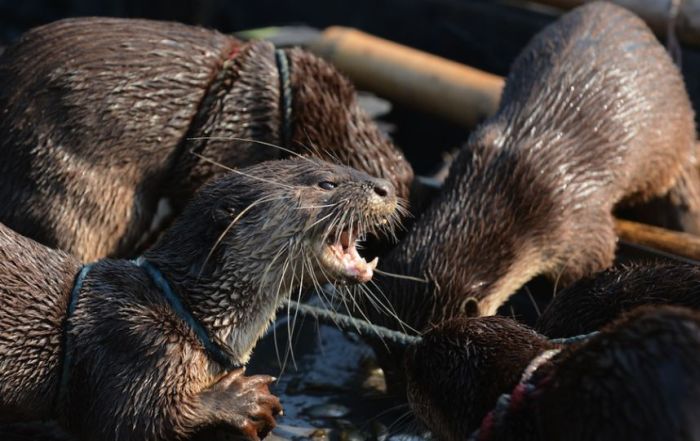|
|
Fishing With Otters
|
Otters have long, slim bodies and relatively short limbs, with webbed paws. Most have sharp claws on their feet, and all except the sea otter have long muscular tails. The twelve species range in adult size from 0.6 to 1.8 metres (2 to 6 feet) in length and 1 to 45 kilograms (2.2 to 100 pounds) in weight. The Oriental small-clawed otter is smallest otter species and the giant otter and sea otter are the largest. They have a very soft, insulated underfur which is protected by an outer layer of long guard hair. This traps a layer of air, and keeps them dry and warm under water.
Many otters live in cold waters and have very high metabolic rates to help keep them warm. Eurasian otters must eat 15% of their body weight a day, and sea otters 20 to 25%, depending on the temperature. In water as warm as 10 °C (50 °F), an otter needs to catch 100 grams (3.5 ounces) of fish per hour to survive. Most species hunt for three to five hours a day, and nursing mothers up to eight hours a day.
For most otters, fish is the staple of their diet. This is often supplemented by frogs, crayfish and crabs. Some otters are expert at opening shellfish, and others will feed on available small mammals or birds. Prey-dependence leaves otters very vulnerable to prey depletion.
Otters are very active, chasing prey in the water or searching the beds of rivers, lakes or the seas. Most species live beside water, but river otters usually enter it only to hunt or travel, otherwise spending much of their time on land to avoid their fur becoming waterlogged. Sea otters are highly aquatic and live in the ocean for most of their lives.
|
|









